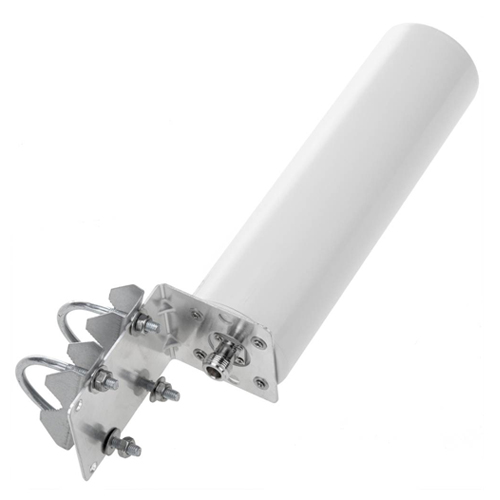Outdoor Antenna
Boost Your Connectivity with Our Top-Rated Signal Boosting Products
Explore our wide range of mobile signal booster products and accessories designed for home, office, and commercial spaces.
Outdoor Antenna: Comprehensive Guide
An outdoor antenna is a crucial component for enhancing signal reception for various applications, including television, radio, and mobile communications. Designed to be installed outside buildings, these antennas offer superior performance by capturing stronger signals from the airwaves and minimizing interference from indoor obstacles.

Key Features of Outdoor Antenna
High Gain:
- Outdoor antennas generally provide high gain, measured in decibels (dBi), which indicates the antenna’s ability to amplify weak signals. Higher gain results in better signal quality and reception over long distances.
Durability:
- Constructed to withstand various weather conditions, outdoor antennas are made from robust materials resistant to rain, wind, UV rays, and extreme temperatures. This ensures long-lasting performance and reliability.
Directional vs. Omni-Directional:
- Directional Antennas: These antennas, like Yagi or Log-Periodic, focus on receiving signals from a specific direction. They are ideal for areas where the signal source is known and can be pointed directly.
- Omni-Directional Antennas: These antennas receive signals from all directions, making them suitable for areas where the signal source direction is variable or unknown.
Frequency Bands:
- Outdoor antennas are designed to operate on various frequency bands, including UHF, VHF, and specific bands for mobile communication like 700 MHz to 2600 MHz. This makes them versatile for different applications.
Mounting Options:
- These antennas can be mounted on rooftops, poles, or masts. Proper elevation helps in avoiding obstacles and receiving cleaner signals.
Amplifiers and Boosters:
- Many outdoor antennas come with built-in amplifiers or can be paired with external signal boosters to enhance reception further, especially in areas with weak signals.
Types of Indoor Antennas
Yagi Antenna:
- Description: A highly directional antenna known for its high gain and narrow beamwidth.
- Use Case: Ideal for long-distance signal reception in rural areas where the signal source is in a known direction.
Log-Periodic Antenna:
- Description: Another type of directional antenna, offering a broader frequency range than Yagi antennas.
- Use Case: Suitable for applications requiring reception across multiple frequency bands.
Omni-Directional Antenna:
- Description: Provides 360-degree coverage, receiving signals from all directions.
- Use Case: Best for urban areas with multiple signal sources and where the direction of the signal source is not fixed.
Panel Antenna:
- Description: Typically rectangular, these antennas provide high gain and are usually directional.
- Use Case: Used for both indoor and outdoor applications, often mounted on walls or poles.
LPDA (Log-Periodic Dipole Array) Antenna:
- Description: A directional antenna with a wide frequency range and moderate gain.
- Use Case: Ideal for broad-spectrum applications, including television and mobile signal reception.
Installation and Setup
Site Survey:
- Conduct a site survey to determine the best location for the antenna. This involves identifying the direction of the signal source and finding an elevated, unobstructed spot for installation.
Mounting:
- Secure the antenna on a mast, pole, or rooftop using appropriate mounting brackets. Ensure it is firmly attached and oriented correctly for optimal signal reception.
Cable Connections:
- Connect the antenna to the signal receiver (TV, radio, or signal booster) using high-quality coaxial cables. Use weatherproofing materials to protect the connections from moisture and other elements.
Amplifiers and Boosters:
- If needed, install signal amplifiers or boosters to enhance the received signal. Place these devices in the signal path between the antenna and the receiver.
Testing and Adjustments:
- Test the signal strength and quality. Adjust the antenna’s direction and position if necessary to achieve the best reception.
Advantages of Outdoor Antennas
- Enhanced Reception: Superior signal capture compared to indoor antennas, resulting in clearer and more reliable reception.
- Long-Distance Performance: High gain allows for effective signal reception over long distances, making them ideal for rural and suburban areas.
- Versatility: Suitable for various applications, including television, radio, and mobile communications across multiple frequency bands.
- Durability: Built to withstand harsh weather conditions, ensuring longevity and consistent performance.
Conclusion
Maximizing Signal Reception with Outdoor Antennas
Outdoor antennas are essential for achieving optimal signal reception in various environments. Whether you need to enhance television, radio, or mobile communication signals, these antennas provide the performance and reliability needed. By understanding the different types of outdoor antennas, their key features, and proper installation techniques, you can make an informed decision to ensure the best signal quality and connectivity.
